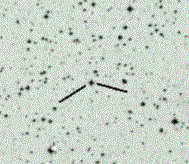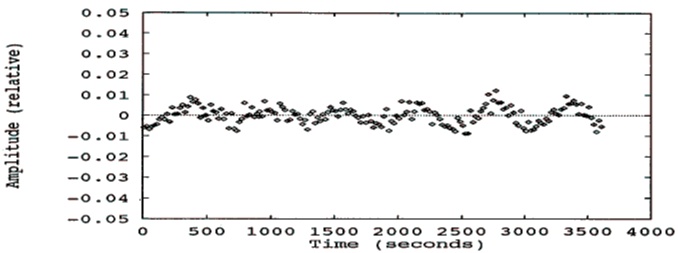
BPM 37093

These are identical instructions as to those for Xcov 16 with the exception of an additional line about CCD filter choices.
BPM 37093 is a massive DAV. The mass is estimated to be around 1.1 Msun (Bergeron, et al., 1995, ApJ, 449, 258). This is massive enough to have a crystallized core at its estimated temperature of Teff=12,000K (Winget et al., 1997, ApJ, 487, L191; Kanaan, et al., 1996, PhD Thesis, University of Texas at Austin). BPM 37093 is unique in that, being a pulsating star, it may provide us the first direct evidence of crystallization in the stellar interior. We expect to find a signature of crystallization in the pulsation characteristics of this star.
This WET run is coordinated with simultaneous Hubble Space Telescope observation. This will allow us to apply two different mode identification methods simultaneously.
For more information,
consult the full BPM 37093 Scientific
Justification.
Some references:
Kanaan et al., 1998, Balt. Astr., (this paper has ALL the data available)
Kanaan et al., 1992, ApJ, 390, L89 (this is the discovery paper)
Winget et al., 1997, ApJ, 487, L191 (this paper is on the results of
the theoretical calculation suggesting BPM 37093 possibly has a
crystallized core.)
BPM 37093 has shown radical amplitude changes on time scales of a couple
days (Kanaan, 1996, PhD Thesis, University of Texas at Austin). Therefore
please don't panic if you see very little or almost no pulsation when you
first set up on the star, and remember, even if it is pulsating the
amplitude is very low, so you may never see any pulsations visually
in the lightcurve. A sample lightcurve (taken from the 1992 discovery paper)
is shown in the figure at the bottom of this page.
| R.A. (J2000) = 12 38 50.3 |
| Dec. (J2000) = -49 48 00 |
| mv = 13.5, mb=14.1 |
Control Center: The XCOV 17 control center is at Iowa State University's International Institute of Theoretical and Applied Physics (IITAP).
Contacting the Control Center: Consult the Phone Contact List for information on phone, fax, and email for the control center as well as the other sites for this run.
Time Check: Please do a clock time check each night before taking data and verify your time with HQ at the beginning of the run, and as often during the run as possible. HQ will have an accurate clock available for phone clock checks.
Data Transfer: There are two ways to send your data and logs at the end of each night.
Observing Logs: We ask that you send a copy of your observation log along with the data, at the same time if you can.
Run start: Please start your run on an integral multiple of ten seconds (times ending in "0"). Check the computer clock just before the start of a run, synchronizing with your master clock to within 0.1 sec if possible.
Integration time: Use 10 seconds integration time.
Filters: Use NO filter on both channels. If you are using a blue-sensitive CCD, also please use no filter unless you have a CuSO4 filter available, in which case please contact us at HQ.
Guide star: Please consult the finder charts and use one of the two stars marked there, if possible; also record your ch2 offsets and telescope plate scale so we can verify exactly which star was observed.
Sky calibration: Observers with 3-channel photometers should record sky in all three channels near the beginning and the end of each run to permit accurate cross calibration. Observers with 2 channel photometers should take sky by moving the telescope. We have sometimes in the past used the channel 2 verniers to measure channel 2 sky (only) but we find this is not really reliable. Try to take sky as often as needed, at least once per 1/2 hour, for 4 or 5 good sky points; more are not needed and cause unwanted data gaps in the light curve of the target star.
Apertures: Please use the smallest aperture consistent with getting data of good quality (e.g. no visible loss of light to the edge of the aperture). A general rule of thumb is to use an aperture approximately 8-10 times the diameter of the seeing disk. Record the size of the aperture (in arcsec) in your observing log.
